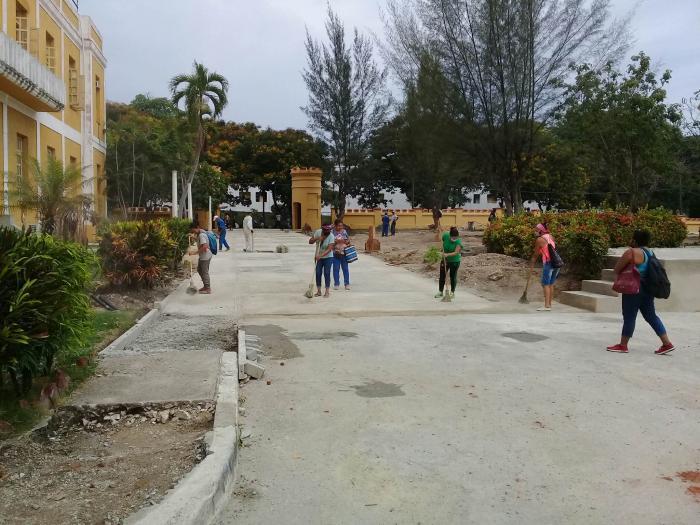
The five elementary schools, one high school, the service and administrative buildings, courts, gardens and all the areas that are part of the former Moncada barracks, which have been the 26th of July School City for almost 65 years, are undergoing a full rehabilitation.
The transformation will improve the development of the teaching-educational process and all those processes taking place in a complex where around 3,500 people coexist.
"There are several works being carried out in the first barracks that Fidel converted into a school in the eastern region," informed Enrique Cutiño, investment specialist at the Provincial Education Division.
"The entire hydrosanitary system is being repaired, it is a novelty for the school that the electricity and telephone networks are underground, a modern lightning rod system was installed and Post 1 is transformed into an access gateway to the schools, Tele Turquino tv station and the Provincial Education Division office."
Brigades from the companies of Restoration and Conservation of Santiago de Cuba, and Supply and Services to Education in the territory work incessantly in each building, in order to provide them with greater comfort while respecting the original architectural values.
"Here we all work to make the schools shine, said Eduviges Font, principal of the José Luis Tassende School, and even the parents, many of them former students, collaborate".
"The Moncada barracks is the symbol of Santiago, I volunteecome to workr as many hours as necessary," confessed María Brooks, a worker of an office whose collective dedicated a day to the renovation of the Ciudad Escolar.
A cistern with a capacity of 260 cubic meters of water is being built to supply the needs of the schools on a permanent basis and the liquefied gas system has been renewed "in response to the demands for cooking food, since each center operates under a semi-boarding system," explained Leonel García, general director of 26 de Julio.
He added that the school furniture has been repaired, the carpentry has been replaced and the classrooms, playgrounds and monuments have already been restored. The walls marking the perimeter of the National Monument have also been painted.
In the western wing, an organoponic garden is being developed and its production will be used for self-consumption.
Some 14 educational centers, among them three daycare centers, have been rehabilitated as part of a program conceived to improve the conditions in a place that was onc the route of the assailants to the barracks on July 26, 1953. Photo: Luis Alberto Portuondo
"Even the coastal community of Juraguá and the pioneer camp next to Granjita Siboney have received rehabilitation works," said the Investment specialist of the Provincial Education Division.
(Translated by ESTI)















